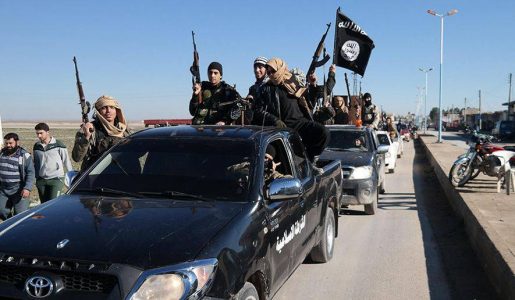
What Islamic State police files can tell us about everyday life under the caliphate
It is not often that regimes wither away and leave behind troves of documents for posterity. It happened in Germany with the Nazi Third Reich and under the German Democratic Republic. Now, to an extent, we have similar evidence of life under Islamic State rule as well.
The terrorist network still exists, with many chapters being active in the Middle East, Asia and Africa. But these function as “regular” terrorist organisations and don’t control territory. The caliphate, in its former incarnation of “semi-state organisation” in and around Mosul and Raqqa, no longer exists.
But through the ISIS Files Project, run by the Program on Extremism of George Washington University, bit by bit the different institutions, bureaucratic arms and policies of the IS caliphate are being reconstructed and analysed. We were asked to look into the files retrieved and originated from the “ordinary” IS police, the shurta to see what light they shed on the way the caliphate functioned on the ground, in particular in interaction with the populace of that region.
We interviewed a number of people who explained to us why they were willing to fall in with this. They said that before the caliphate was established, life under Assad in Syria or in post-Saddam Iraq for them (predominantly Sunni muslims) had been unpredictable and insecure:
“Soldiers were roaming the streets, our daughters were being raped, just like that. IS brought us predictability, some kind of safety even.”
As long as they complied, of course, with IS rule. Submission to that rule, which was not only military and political, but also religious and moral, was – in the short run and in the context of war and anarchy – the lesser evil. It was even profitable to a certain extent, since it was now far more easy to settle debts, and effectively complain about rents and allowances.
Interestingly, we were also able to estimate what the shurta did with these complaints. Most of the complaints were settled “peacefully”. This was either through practices of reconciliation (including religious rituals and surah from the Quran being read) or through financial fines or by excuses and apologies.
In a minority of the cases, the conflict could not be settled by the shurta and would be delegated to the prosecutor and the courts. In all likelihood, not many litigants would risk a case to be referred to these authorities, given the probability of corporal punishment or worse. With its aim to settle conflicts “peacefully”, through reconciliation practices, the shurta seemed to echo older, even Ottoman-Islamic local practices of conflict management and retributive justice.
IS was able to deliver a semblance of order and justice within the borders of the caliphate. At the same time, the practices of denunciation indicate deeper societal rifts among residents. The question as to what extent denunciation was ideologically and religiously driven – or an opportunistic means of settling scores and solving personal, material needs and disputes – remains open.
Looking at archival evidence of the way people lived under the caliphate it appears that in an absence of justice and an efficient rule of law, the IS shurta was a modern, complex – even efficient – police force. That it functioned as an instrument of a brutal, extremist, repressive system of rebel rule – and that with its system of rule it exacerbated rifts and (sectarian) wedges in society – is equally true.
Source: The Conversation





